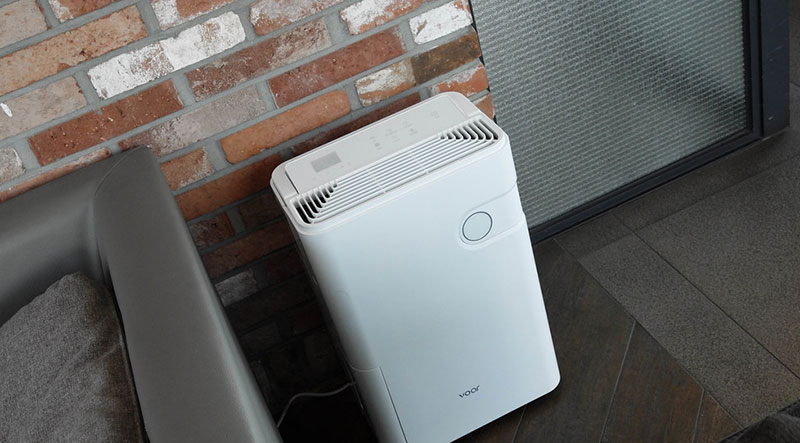In today’s world, where air pollution has become a significant concern, investing in an air purifier has become a popular choice for many households. With a wide range of options available in the market, selecting the right air purifier can be a daunting task. This article aims to provide a comprehensive guide to help you make an informed decision when choosing an air purifier, based on the valuable insights provided by The Washington Post’s article titled “How to Choose an Air Purifier.”
Understand Your Needs:
The first step in choosing an air purifier is to understand your specific needs. Do you live in a highly polluted area? Are you concerned about allergens or odors? Identifying the primary pollutants you want to target will help determine the type of air purifier that suits your requirements.
Consider the Filter Types:
Air purifiers use various types of filters to remove contaminants from the air. The Washington Post article emphasizes the significance of High-Efficiency Particulate Air (HEPA) filters. These filters are known for their ability to capture 99.97% of particles as small as 0.3 microns. Additionally, activated carbon filters are effective in eliminating odors and certain gases. Understanding the different filter types will enable you to choose an air purifier that meets your specific needs.
Assess the Coverage Area:
When selecting an air purifier, it is essential to consider the size of the room or area where it will be used. The Washington Post article highlights the importance of matching the purifier’s coverage area to the room’s square footage. Choosing an air purifier with a higher Clean Air Delivery Rate (CADR) is also recommended, as it indicates the device’s ability to filter the air efficiently.
Noise Levels and Energy Efficiency:
Noise levels can significantly impact your comfort and daily activities. The Washington Post article advises considering the noise level produced by the air purifier, particularly if you plan to use it in a bedroom or an office. Energy efficiency is another crucial factor to consider, as it determines the long-term operational costs and environmental impact of the device.
Additional Features and Considerations:
The Washington Post article mentions several additional features that can enhance the performance and convenience of an air purifier. These include smart connectivity options, filter replacement indicators, air quality sensors, and programmable timers. Evaluate these features to determine if they align with your preferences and convenience.
Read Customer Reviews:
Before finalizing your decision, it is beneficial to read customer reviews and ratings of different air purifier models. The Washington Post article recommends considering reviews from reputable sources, such as consumer websites or organizations that conduct independent tests. These reviews provide valuable insights into the product’s performance, durability, and customer satisfaction.
Conclusion:
Selecting the right air purifier is crucial for maintaining a clean and healthy indoor environment. By understanding your needs, considering filter types, assessing coverage area, evaluating noise levels and energy efficiency, and considering additional features, you can make an informed decision when purchasing an air purifier. Furthermore, consulting trusted sources like The Washington Post and reading customer reviews will contribute to your understanding and help you choose an air purifier that best suits your requirements. Remember, investing in a high-quality air purifier is an investment in your health and well-being.
 Advantages of using air purifiers:
Advantages of using air purifiers:
Air purifiers offer a range of benefits that contribute to creating a healthier and cleaner indoor environment. Here are some key advantages of using air purifiers:
- Removes Airborne Pollutants: One of the primary benefits of air purifiers is their ability to eliminate airborne pollutants. They effectively capture and remove various contaminants, such as dust, pollen, pet dander, mold spores, bacteria, and viruses, from the air. This is especially beneficial for individuals with allergies or respiratory conditions.
- Improves Indoor Air Quality: Indoor air can be more polluted than outdoor air due to factors like poor ventilation, chemicals from household products, and pollutants from outside sources. Air purifiers help improve indoor air quality by reducing the concentration of pollutants and providing cleaner, fresher air to breathe. This is particularly important for individuals who spend a significant amount of time indoors, such as children, the elderly, and those with compromised immune systems.
- Reduces Odors: Air purifiers equipped with activated carbon filters can effectively reduce unpleasant odors in the environment. These filters absorb odorous particles and neutralize smells from cooking, pets, tobacco smoke, and other sources, making the indoor air more pleasant.
- Controls Asthma and Allergies: For individuals with asthma and allergies, air purifiers can be a valuable tool in managing symptoms. By removing allergens such as pollen, dust mites, and pet dander, air purifiers help create an environment that is less likely to trigger allergic reactions or asthma attacks.
- Enhances Sleep Quality: Air purifiers can contribute to better sleep quality by creating a cleaner and more comfortable sleeping environment. By reducing airborne irritants, allergens, and pollutants, they can help alleviate nasal congestion, sneezing, and coughing that may disrupt sleep.
- Supports Respiratory Health: Breathing in clean air is essential for maintaining optimal respiratory health. Air purifiers remove harmful particles, pollutants, and irritants from the air, reducing the risk of respiratory illnesses and promoting overall lung health.
- Minimizes the Spread of Airborne Diseases: Air purifiers equipped with high-efficiency filters can capture and eliminate viruses, bacteria, and other microorganisms present in the air. This can be particularly beneficial during flu seasons or in environments where airborne diseases may spread easily, such as schools, offices, or healthcare facilities.
- Creates a Cleaner Living Environment: By reducing dust particles and airborne contaminants, air purifiers help keep surfaces cleaner for longer. This can reduce the frequency of dusting, minimize the accumulation of allergens on furniture and other surfaces, and contribute to a tidier living environment.
It is important to note that while air purifiers offer numerous benefits, they are not a substitute for proper ventilation and regular cleaning practices. Combining the use of air purifiers with good hygiene habits, adequate ventilation, and maintaining a clean living space will yield the best results in promoting a healthier indoor environment.


 Advantages of using air purifiers:
Advantages of using air purifiers: